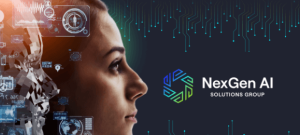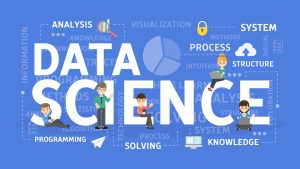In the fast-paced digital world, data analytics has emerged as a crucial discipline for organizations across industries. By harnessing the power of data, businesses can uncover valuable insights, make informed decisions, and gain a competitive edge.
The Data Analytics Course provides comprehensive training on the latest trends and techniques in data analytics, aligning with the top 8 data analytics trends expected in 2023.
As we step into 2023, several trends are shaping the data analytics landscape, revolutionizing the way organizations utilize data. In this article, we will explore the top eight data analytics trends that are expected to dominate the year 2023.
Augmented Analytics:
Augmented analytics automates and improves the data exploration and analysis process by combining artificial intelligence (AI) and machine learning (ML) techniques with traditional data analytics. This trend gives business users and data analysts greater leverage by making it easier for them to access and evaluate data. Organisations may use augmented analytics to automate data preparation, modelling, and visualisation by using advanced algorithms and natural language processing, making analytics more accessible to a wider audience.
Real-time and streaming analytics:
As data quantities continue to grow, the demand for real-time and streaming analytics becomes more pressing. Traditional batch processing methods are giving way to real-time analytics, which allows businesses to analyse and act on data as it comes in, making insights more current and actionable. Streaming analytics enables organisations to notice and respond in real-time to events and trends, allowing proactive decision-making, fraud detection, predictive maintenance, and personalised consumer experiences. Real-time and streaming analytics will gain popularity in 2023 as organisations seek to capitalise on the value of data in motion.
Data Privacy and Ethics:
As organisations and individuals rely more on data, privacy and ethics have become critical considerations. We may anticipate a greater emphasis on data privacy rules, openness, and ethical data management practises in 2023. Organisations will invest in strong data governance frameworks, employ privacy-enhancing technology, and place a premium on ethical data usage. Data analytics will be more open and responsible, with a heavy emphasis on preserving individual privacy rights and developing consumer confidence.
Edge Analytics:
The growth of Internet of Things (IoT) devices and edge computing has paved the way for edge analytics. Edge analytics entails processing and analysing data at the network’s edge, closer to the data source, rather than transmitting it to a centralised cloud or data centre. This trend enables organizations to gain real-time information and make rapid choices at the edge, lowering latency, improving response times, and optimizing bandwidth utilization. Edge analytics will be critical in enabling autonomous systems, smart cities, and Industry 4.0 applications by 2023, as more gadgets become linked and intelligent.
Explainable AI:
As AI and ML algorithms become more common in data analytics, the necessity for explainable AI grows. Explainable AI is concerned with ensuring that AI-driven choices and insights are understandable, interpretable, and trustworthy by humans. This approach seeks to demystify AI by allowing stakeholders to understand how decisions are made. Explainable AI will gain popularity in 2023 as organizations work to address concerns about bias, accountability, and the ethical implications of AI-powered analytics.
Automated Machine Learning (AutoML):
Due to a lack of data science expertise and the rising complexity of analytics operations, Automated Machine Learning (AutoML) has grown in popularity. Automation is used by AutoML systems to streamline and speed the machine learning process from data preparation through model deployment. Organizations may empower citizen data scientists to design and deploy machine learning models with ease by automating repetitive operations such as feature engineering, model selection, and hyperparameter tuning. AutoML will continue to gain traction in 2023, making data science more accessible and democratising AI.
Data Governance and Data Quality:
Data governance and data quality are vital for organizations to ensure the reliability, integrity, and usefulness of their data. Data governance involves establishing policies, procedures, and controls for data management, while data quality focuses on maintaining accurate, complete, and consistent data. A robust data governance framework outlines data ownership, access controls, and lifecycle management. Data stewards oversee data quality, resolve issues, and promote best practices.
Data integration and Master Data Management (MDM) unify and standardize data from various sources. Privacy and security measures protect sensitive data. Continuous monitoring and improvement ensure ongoing data quality. Effective data governance and data quality practices lead to improved decision-making, operational efficiency, reduced risks, increased customer trust, and overall business success.
Natural Language Processing (NLP):
Natural Language Processing (NLP) is a field of artificial intelligence (AI) that focuses on the interaction between computers and human language. NLP enables computers to understand, interpret, and generate human language, allowing for more effective communication and analysis of textual data. It involves various techniques, including text parsing, semantic analysis, sentiment analysis, and language generation.
NLP has numerous applications across different industries. It powers chatbots and virtual assistants, enabling them to understand and respond to user queries in a conversational manner. NLP also facilitates language translation, enabling the automatic translation of text between different languages. Sentiment analysis in NLP allows organizations to analyze customer feedback, social media data, and online reviews to gain insights into customer sentiments and opinions.
In 2023, NLP is expected to advance further with improved language models, contextual understanding, and enhanced natural language generation capabilities. These advancements will enable more accurate sentiment analysis, language translation, text summarization, and other NLP-driven applications, revolutionizing how we interact with computers and extract insights from textual data.
DataOps:
DataOps is an agile and collaborative approach to data analytics and data management that focuses on streamlining and optimizing the end-to-end data lifecycle. It combines principles and practices from DevOps with data engineering, data integration, and data quality to enhance the efficiency and effectiveness of data operations within organizations.
DataOps emphasizes automation, collaboration, and continuous improvement in data-related processes. It aims to break down silos between different teams involved in data management, such as data engineers, data scientists, and business analysts, promoting cross-functional collaboration and shared responsibilities.
Key elements of DataOps include:
Automated Data Pipelines: DataOps encourages the automation of data pipelines, which involve the extraction, transformation, and loading (ETL) of data from various sources. Automation reduces manual effort, improves data quality, and enables faster data delivery for analytics and decision-making.
Data Quality Management: DataOps emphasizes the importance of data quality and promotes data quality management practices throughout the data lifecycle. It involves data profiling, data cleansing, and data validation techniques to ensure that data is accurate, consistent, and reliable.
Continuous Integration and Deployment: DataOps borrows from DevOps principles of continuous integration and deployment, enabling frequent updates and releases of data-related processes and workflows. This allows organizations to respond quickly to changing business needs and ensure the timely availability of reliable data for analysis.
Collaboration and Communication: DataOps fosters collaboration and communication between different teams involved in data management. It encourages the use of shared tools, platforms, and documentation to facilitate knowledge sharing and improve efficiency.
Monitoring and Feedback Loops: DataOps promotes continuous monitoring of data operations and the establishment of feedback loops to identify and resolve issues quickly. This enables organizations to proactively address data quality issues, performance bottlenecks, and other challenges that may arise during the data lifecycle.




